DELACHAUX, MONTMARTRE, WORKS ON PAPER, 1888 – 1919
“M. Delachaux, a colorist, even when using a pencil”
Journal de Genève, 12 February 1889
In 1888, the painter Léon Delachaux moved to rue Durantin, at the foot of the Butte Montmartre in Paris.
He kept this modest pied-à-terre until his death, using it as his studio and, later, as a home base between travels.
He integrated village life where families of artisans and laborers coexisted with the artists of the Bateau-Lavoir. Clarence, his only son, was a student at the lycée Chaptal. Delachaux exhibited in France, Switzerland, Europe and the United States. Yet he felt drawn to the Louvre, as he explained in a letter to Théogène Chavaillon, his artist friend from Saint-Amand: “I have begun to feel the need to see the Louvre again, it is so beautiful and one feels so at home in those beautiful rooms among those masterpieces.” (1)
Léon Delachaux’s entire body of work bears witness to a master of intimacy. His works on paper and his sketchbooks reveal an unremitting attention to that which is alive and emotionally moving. Known to us are his numerous drawings depicting his favorite spots – streets or public squares – where he sketched relentlessly all that he witnessed: conversations, family scenes, snapshots in time. Even when taken ill he continued to draw: “I’m still confined to my dreary studio and I spend my time drawing!” (2)
Fully displayed in the sketches created at the square Saint-Pierre in the 1890s are the artist’s close observational skills and his preference for life’s ordinary subjects:
Léon Delachaux’s interest in meticulous representation of the urban landscape can be seen in his highly successful drawings depicting the rue Saint-Vincent; its mighty terraced walls have been home to the Clos-Montmartre vineyard since the tenth century. Other scenes depict the rue de l’Abreuvoir (drinking trough), which the French Romantic poet Gérard de Nerval described in 1854: “What charmed me most in this small space shaded by the tall trees of the château des Brouillards, was […] the proximity of the drinking trough, which, in the evening, came to life with the sight of horses and dogs being washed in it.”
His watercolor sketches of goats are a reminder that Montmartre was once in the countryside.
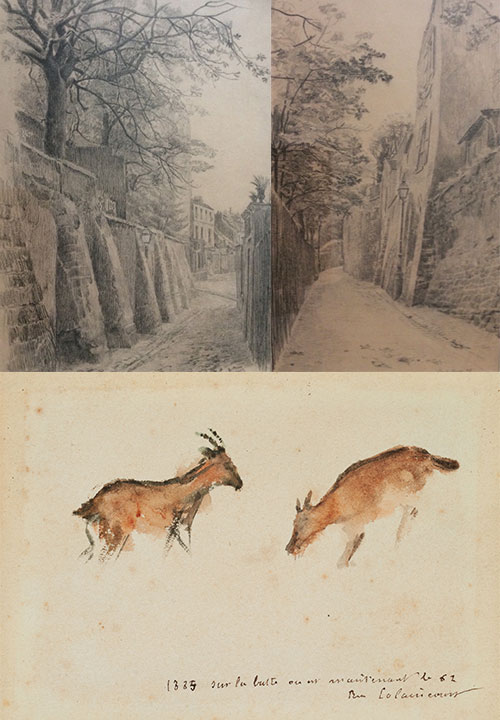
Léon Delachaux (1850-1919)
“La Rue Saint-Vincent I” et “La Rue Saint-Vincent II”, 1896. Drawings, 38 x 24 cm et 39 x 29 cm.
“Study of goats, Montmartre”, 1885. Watercolor and pencil on laid paper, 10,4 x 15,5 cm.
Private Collection
In 1889 – year of the Paris Exposition Universelle (World’s Fair) – Buffalo Bill came to France with hundreds of people and horses to perform his “Wild West” show and set up camp on the Butte Montmartre. A watercolor by Delachaux, dedicated to his friend François Guiguet (1860-1937), depicts this historic site, indicated by the handwritten note on the back: “View from rue Caulaincourt where Buffalo [Bill], the bandit, stayed, before construction of the set.”
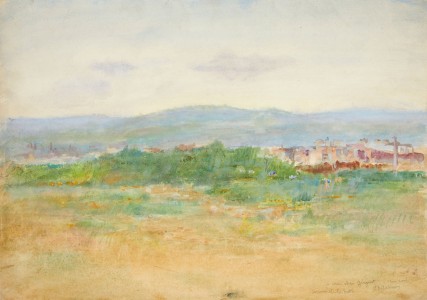
Léon Delachaux (1850-1919), “Landscape, Souvenir de la Butte (Souvenir of Montmartre)”
Watercolor on paper, 25,5 x 36 cm. Private Collection
François Guiguet and Léon Delachaux, both Montmartre residents, were neighbors and became friends. They corresponded on a regular basis until 1918. Their letters reveal the importance they attached to drawing. They exhibited together at the Salon de la Société Nationale des Beaux-Arts, hailed by critics: “Mr. Guiguet, […] such truth in interpretation, which at times borders on indiscretion. His drawings in red chalk are among the most beautiful in the contemporary school, along with those of Dagnan-Bouveret and Mr. Delachaux.” (3) et (4)
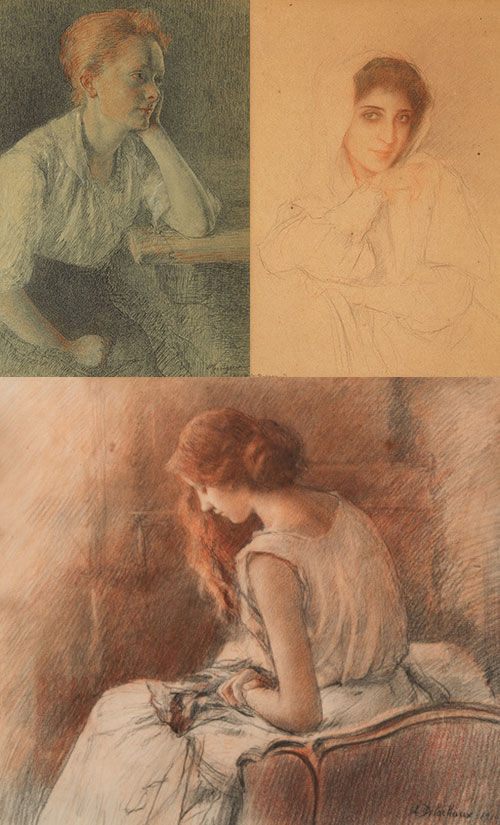
François Guiguet (1860-1937), “Jeanne pensive (Pensive woman)”, 1918,
red and black chalk on paper, 37 x 26,5 cm. Private Collection
Pascal Dagnan-Bouveret (1852-1929), “Femme au voile (Veiled woman)”,
red and black chalk on paper, 27 x 19 cm. Private Collection
Léon Delachaux (1850-1919), “Jeune fille pensive de profil (Pensive young woman, profile)”, 1916,
red and black chalk on paper, 30 x 35 cm. Private Collection
.
.
(1) : Letter from Léon Delachaux to Théogène Chavaillon, from Saint-Amand-Montrond, on 18 January 1906. Chavaillon Archives.
(2) : Lettre from Léon Delachaux to Théogène Chavaillon, from Paris, rue Durantin, on 8 or 9 March 1902. Chavaillon Archives.
(3) : Léandre Vailéat, « Au sujet des Salons de 1912 », Le Correspondant, 1912, 84ème année, tome 247, Paris, Bureaux du Correspondant, p. 71.
(4) Pascal Dagnan-Bouveret (1852-1929) was Léon Delachaux’s master from 1883 to 1884.
/ / /
/ / /
/ / /
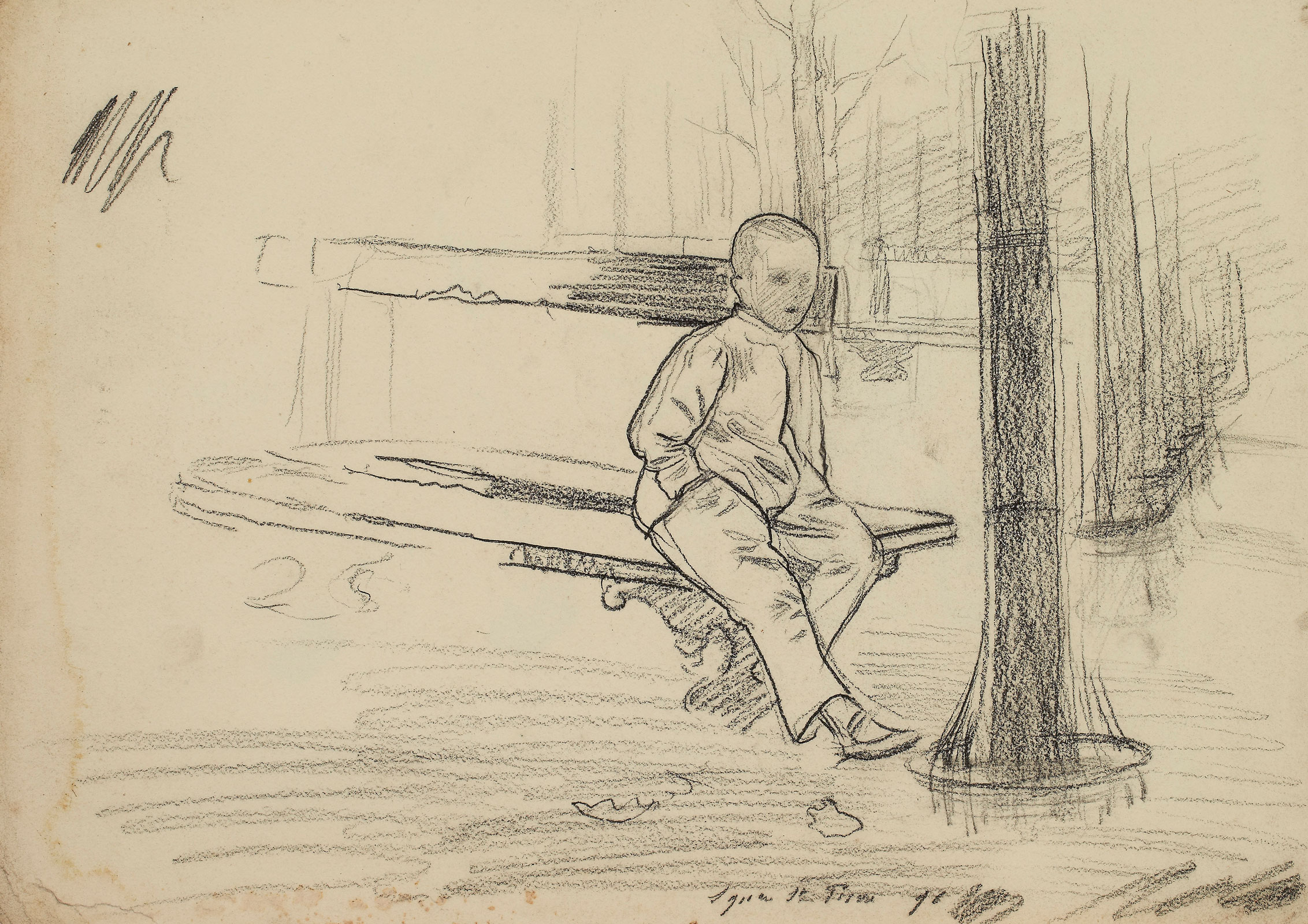
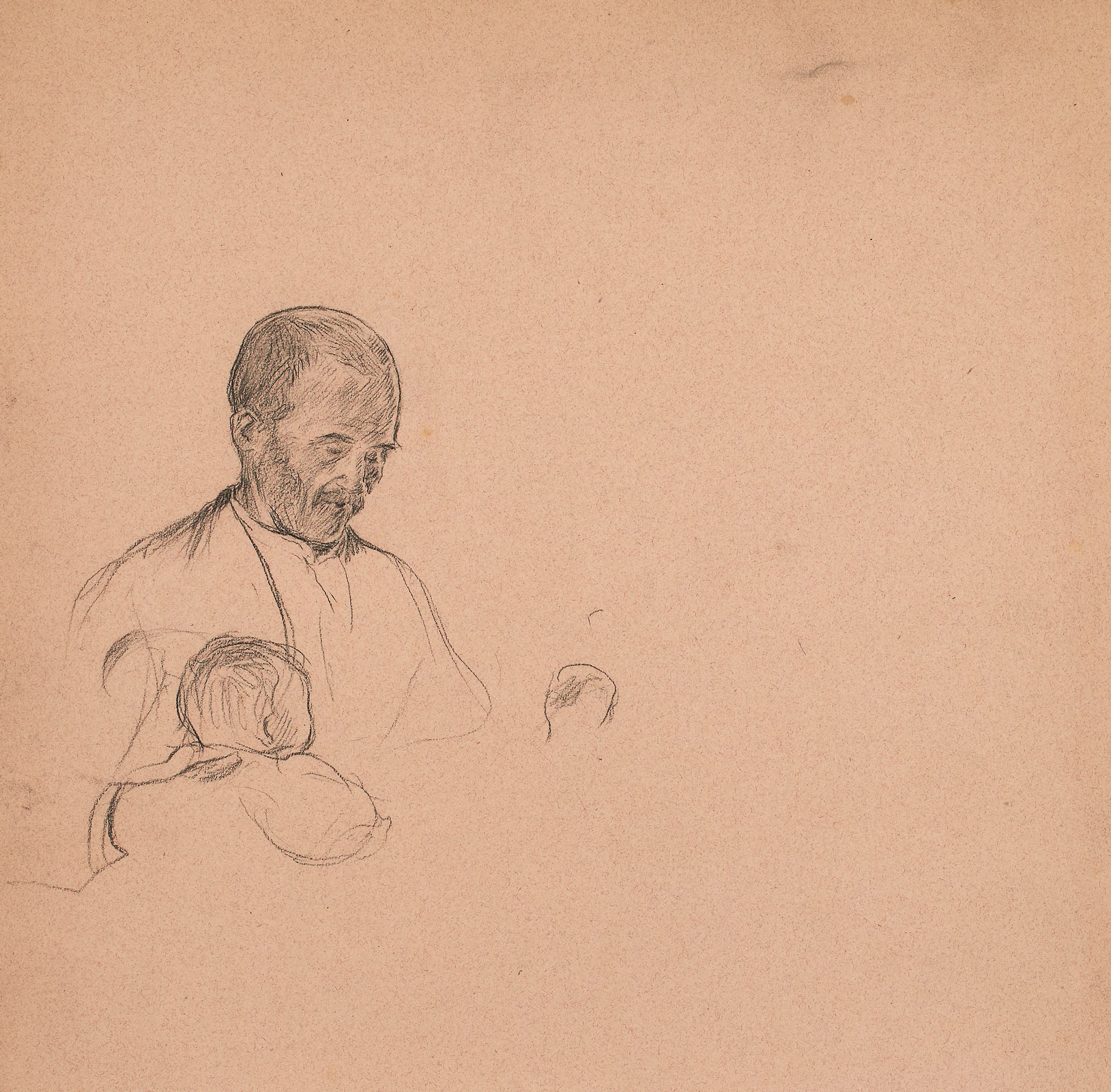
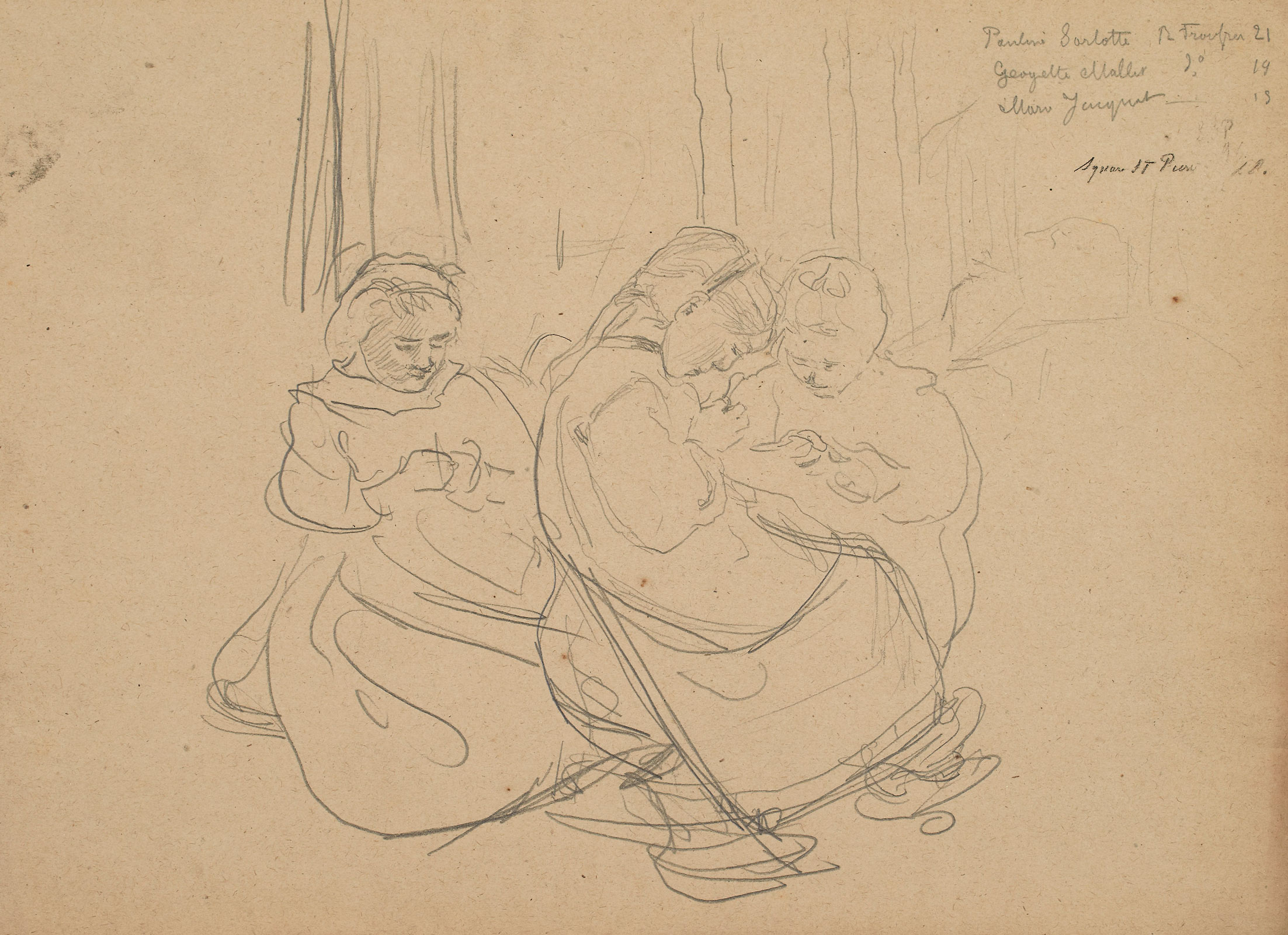
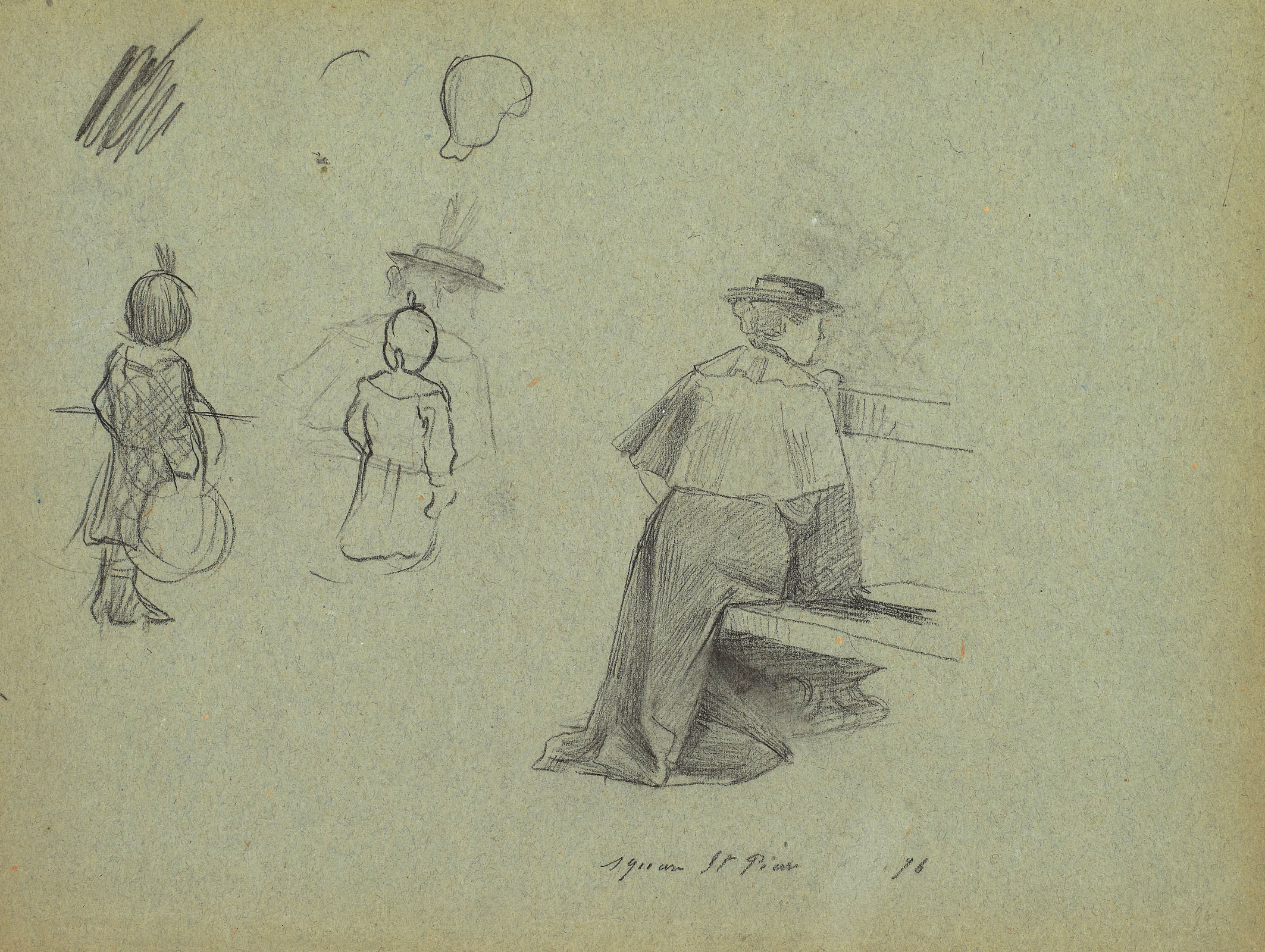
 English
English  Español
Español  Français
Français